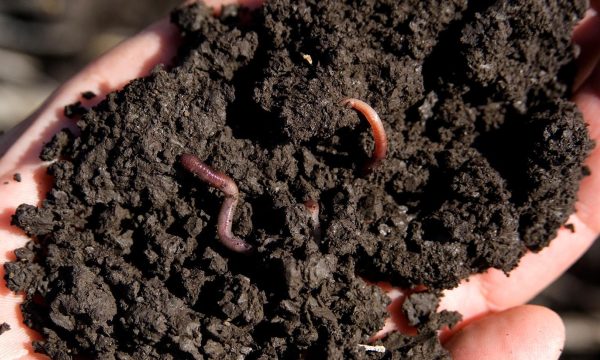Project news Organic carbon content in soils of public domain and private gardens
Lawns and ornamental gardens contain as much carbon as agricultural grassland, but vegetable gardens realize a doubling compared to arable land, according to measurements within project C-GAR. This should be taken into account when designing a monitoring network for carbon stocks in Flemish soils.

Through the LULUCF (Land Use, Land use Change and Forestry ) regulation, the European Union wants to intervene on emissions induced by human activities and/or storage in carbon stocks. In doing so, it puts forward the "no-debit rule" for the period 2021-2030. Specifically, each member state must do everything possible to at least preserve existing carbon stocks at the end of that period. In order to meet this objective, the Flemish Government aspires to start up a systematic monitoring of changes in organic carbon stocks in Flemish soils. To keep such a large scale sampling manageable and cost efficient, the present variability and the number of sampling points that will be required to detect a certain change in organic carbon need to be estimated beforehand. For grassland, cropland, forest and nature this could already be determined quite accurately but for public domain and private gardens insufficient data was available. Therefore, by order of the Flemish Government, ILVO, Ghent University and INBO joined forces and carried out a one-time monitoring of the organic carbon stocks in soils of public domains, roadsides and private gardens. ILVO was responsible for the sampling in gardens.
In the autumn of 2019 and the spring of 2020, soil samples were taken in 35 gardens geographically distributed across Flanders to a depth of 1m in order to determine the carbon stocks present. In each garden a distinction was made between lawn, ornamental garden (including hedges, borders, flower beds) and vegetable garden, after which each garden section was sampled separately. The participating gardens were mainly situated on the lighter soil textures (loamy sand, sand) and varied in size from 200 m² to as large as 12000 m². In 83% of the cases an ornamental garden was present in addition to a lawn while in only 33% of the gardens a vegetable garden was also present. The average amount of carbon present under lawn and ornamental garden was found to be about the same and amounted to 71 and 74 tons/ha respectively in the 0-30cm soil layer. These values are close to what is generally present in agricultural grassland. In vegetable gardens that again turned out to be significantly more carbon present (98 tons/ha). This is about twice as much as what is found in agricultural fields. The quasi annual application of considerable amounts of structure-rich organic material (e.g. compost, farmyard manure) may be the main reason for this. As a recommendation to the carbon monitoring network, we can state that lawns and ornamental gardens should not be sampled separately, which makes sampling considerably easier since both garden parts often occur in a scattered and fragmented manner within one garden. Since the carbon stocks of vegetable gardens were clearly larger and more variable than those of lawns and ornamental gardens, a separate sampling seems appropriate here.


